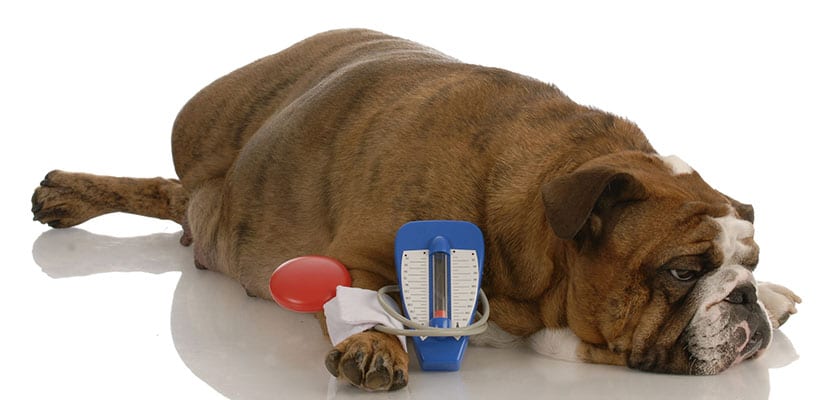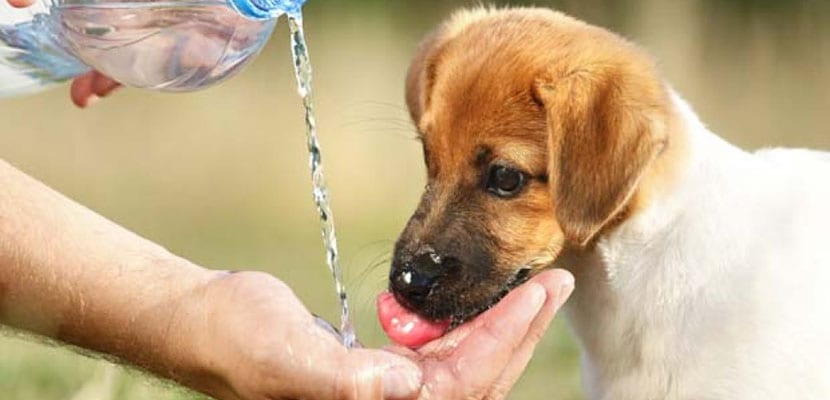
It is estimated that one in 500 dogs can develop diabetes. It is not one of the diseases that is most talked about in dogs, but it can undoubtedly become a problem if we have a dog with this disease and we do not know how to recognize it in time. Diabetes in dogs has symptoms and treatments that we must know to face the disease.
La diabetes in dogs It differs from that of humans and you have to take into account all the details that this implies. In addition, we must know a little more about the process of diabetes and what it means for any body, since having information enables us to better deal with the problem.
Diabetes in dogs and humans
Diabetes in humans can be of two types. On the one hand we have type I diabetes in which due to a genetic failure the body is unable to produce insulin. On the other hand, there is type II diabetes in which the body develops resistance to insulin, which is normally associated with obesity. Dogs mostly have the type I diabetes, which is a genetic problem in which the body does not produce insulin.
How does it work
La blood glucose is what gives cells energy, but for them to be able to process and recognize it, it is necessary that insulin comes into play, which is produced by the pancreas, an organ that is damaged in dogs with diabetes. In these cases, by not producing insulin, the cells do not recognize glucose or are able to use it, so it accumulates in the blood. Proteins and fats are consumed because the body needs energy and glucose ends up being filtered through the urine, since the cells cannot use it.
Symptoms of diabetes in dogs

For the owners to be able to recognize problems in the dog we have to be clear about some of the symptoms that are visible and clear. In the case of diabetic dogs, it happens that by having to expel glucose with urine they drink much more than normal and they also urinate a lot. The lack of use of glucose also causes them to eat more for energy, even though they do not gain weight because that glucose is not used. In general, we should go to the vet if we see that the dog drinks and urinates too much, more than normal. This may be a symptom of something else but it is better to be sure. It may also be that they have more appetite and that they do not gain weight, in addition to being listless and without energy.
Diagnosis
With a visit to the vet we can determine if these symptoms really coincide with a diagnosis of type I diabetes in dogs, which is the most common. The vet will take a urine sample to analyze it and determine if there are high levels of glucose in it or any infection. A blood test will also be done to see the glucose levels in your blood. If the glucose levels are always too high this will indicate that his body does not secrete enough insulin to use that glucose in the blood, that is, that the dog is diabetic. In general, when performing a blood test on the dog, a small portion of the paw is shaved to have easy access to the veins and a quick extraction is performed in which it is important that the dog is still.
Treatment for diabetes in dogs

The problem with diabetes is that it is a chronic disease in dogs, It cannot be cured, so its treatment is aimed at controlling the disease and preventing other problems related to it, such as cataracts in the eyes. When treating the dog, there is usually a first stabilization phase, because the disease has not been controlled until it has been known that the dog had it. In the stabilization phase, insulin is usually administered to the dog to balance its body. On the other hand, in maintenance we will be given a specific diet and some changes that will affect the dog's daily routine.
In principle the veterinarian will have to establish what is the insulin dose the dog needs, because every dog is different. To know this, blood glucose controls will be made and insulin will be administered at the veterinarian, who will also ask the owner to control how much the dog eats or drinks per day. This is a way to define and control the disease on an individual basis.
La diet is going to be another important factor in the life of the diabetic dog. We must control the quantities very well, as indicated by the veterinarian. In addition, an ideal diet for them will contain a controlled amount of fat, complex carbohydrates and a lot of fiber. Although the food can be controlled with commercial feed, the truth is that it is also possible to give it a good homemade diet, always with the guidelines and recommendations that the veterinarian can give us.
Other tips

Es advisable to sterilize diabetic dogs, especially to females, since hormonal changes can also have an impact on the control of the disease. In addition to avoiding other diseases, we will be able to control diabetes in the dog much better.
The owners will have to administer insulin once the daily dose is controlled. It is important to follow the conservation guidelines dictated by the veterinarian. In principle, these are usually that you have to keep the insulin in the fridge, never in the freezer, and that it should be in an upright position.
El exercise is recommended on any dog. It is also diabetic in dogs, because this helps to improve the bloodstream, to lower blood glucose levels, but we must always bear in mind that these can drop a lot. In general, what is recommended in these dogs to control hyperglycemia is that exercise is moderate and constant, daily. With a few good walks every day we will have our dose of exercise done, but it is better to avoid activities that are too strong.